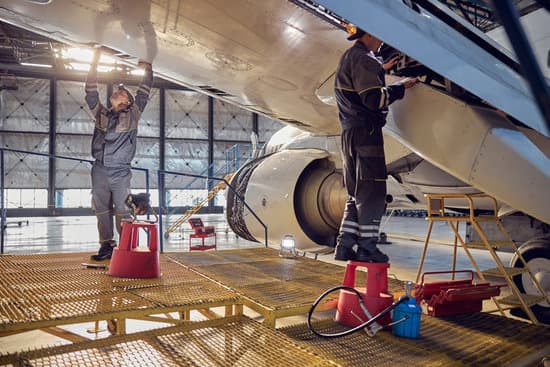What Is Predictive Maintenance in Aviation?

Predictive maintenance in aviation uses data to predict when maintenance is needed. This helps airlines plan maintenance and improve the efficiency and reliability of aircraft maintenance.
“With predictive maintenance, the idea is to still perform maintenance but make it condition-based; so, rather than doing maintenance based on a certain fixed number of flight hours, flight cycles, or calendar dates, we determine which condition of aircraft systems and components would justify performing maintenance actions,” explains Exsyn Aviation Solutions.
We all know that aviation maintenance, including the inspection and repair of aircraft systems and components, is crucial to keeping aircraft flying safely in the skies.
The question is the type of maintenance model to use.
Reactive vs. Preventive vs. Predictive Aviation Maintenance
In aviation, the two traditional models of maintenance are reactive and preventative with reactive being failure-based (something breaks or does not work properly, so it must be fixed) and preventative being detailed inspections from A and B checks (lighter inspections) and C and D checks (heavier checks including overhauls).
Exsyn says it’s almost a Goldilocks situation with reactive being too late and preventative often being too early and predictive, when done correctly, just right.
“In short, reactive maintenance is too late as in AOG (aircraft on ground) situations; this approach has several disadvantages, including unexpected downtime, increased maintenance costs, and reduced operational efficiency. Preventive maintenance means that you’re doing some jobs too early and as such can be quite costly; but predictive maintenance tries to do maintenance right on time,” says Exsyn.
How Aviation Predictive Maintenance Uses Data
Predictive maintenance uses AI and ML algorithms to analyze data and identify patterns that may indicate equipment failure. This helps airlines spot early signs of failure and take remedial actions to avoid failure.
Predictive maintenance uses data from:
- Aircraft sensors: Aircraft are equipped with a vast array of sensors that collect data on various aspects of the aircraft's performance, such as engine temperature, vibration levels, fuel consumption, and hydraulic pressure. Predictive maintenance systems can analyze this sensor data in real-time to identify anomalies or patterns that may indicate a potential failure. This allows airlines to schedule maintenance interventions before a failure occurs, preventing unplanned downtime and improving safety.
- Operational data: Operational data includes information on the aircraft's flight history, such as the number of hours flown, the number of cycles completed, and the types of routes flown. Predictive maintenance systems can analyze this data to identify trends that may indicate a potential failure. For example, an increase in engine vibration levels over time may indicate that a bearing is wearing out.
- Maintenance logs: Maintenance logs contain a record of all maintenance activities performed on the aircraft, including the date of the maintenance, the type of maintenance performed, and the parts replaced. Predictive maintenance systems can analyze this data to identify patterns that may indicate a potential failure. For example, a repeated failure of a particular component may indicate that there is a design flaw or that the component is not being properly maintained.
- Combining data from multiple sources: Predictive maintenance systems can combine data from multiple sources, such as aircraft sensors, operational data, and maintenance logs, to get a more comprehensive view of the aircraft's health. This allows for more accurate predictions of potential failures and can help to identify hidden patterns that may not be apparent from any single source of data.
- Using machine learning algorithms: Machine learning algorithms can be used to analyze data from aircraft sensors, operational data, and maintenance logs to identify patterns and anomalies that may indicate a potential failure. Machine learning algorithms can also be used to predict the remaining useful life of components, which can help airlines optimize their maintenance schedules.
- Developing digital twins: Digital twins are virtual representations of physical assets, such as aircraft. Digital twins can be used to replicate the behavior of the physical asset and to test different maintenance scenarios. This can help airlines to identify potential problems before they occur and to develop more effective maintenance strategies.
The Benefits of Predictive Data in Aviation
The key benefits of predictive data in aviation include:
- Enhanced safety: Predictive data empowers airlines to proactively identify potential component failures before they occur, preventing catastrophic incidents and ensuring the safety of passengers and crew. By analyzing data from sensors, maintenance logs, and operational data, predictive maintenance systems can detect anomalies and predict potential issues, allowing airlines to schedule timely maintenance interventions and avert safety risks.
- Reduced downtime: Unplanned downtime can lead to significant financial losses and disrupt passenger schedules. Predictive data helps airlines minimize downtime by predicting when maintenance is needed, enabling them to proactively schedule maintenance activities during planned downtime periods. This proactive approach ensures aircraft availability and minimizes disruptions to operations.
- Improved Staff Planning: Predictive data plays a crucial role in optimizing staff planning and scheduling. By anticipating maintenance needs, airlines can effectively allocate maintenance personnel and resources, ensuring that the right expertise is available at the right time. This data-driven approach leads to more efficient staff utilization and reduces the risk of labor shortages.
- Reduced Operational Costs: Predictive maintenance proactively addresses potential problems before they escalate into more costly repairs or failures. By preventing unplanned downtime and minimizing the need for emergency repairs, airlines can significantly reduce operational costs associated with maintenance. Additionally, predictive data can help optimize fuel consumption and improve routing efficiency, further reducing overall operational expenses.
- Enhanced Asset Management: Predictive data provides valuable insights into the health and performance of aircraft components, enabling airlines to make informed decisions about asset management. By predicting the remaining useful life of components, airlines can optimize their replacement schedules, ensuring that parts are replaced at the optimal time to maximize their lifespan and minimize costs.
- Improved Regulatory Compliance: Predictive maintenance data can be used to demonstrate compliance with regulatory requirements related to aircraft maintenance. Airlines can use data-driven insights to track maintenance activities, ensure adherence to maintenance intervals, and provide evidence of their commitment to safety and regulatory compliance.
Predictive Maintenance in Aviation Still Has Hurdles to Clear
Aviation Week reported earlier this year that despite the promises of predictive maintenance in aviation it still has some hurdles to clear in the industry.
“Despite all the talk about it, predictive maintenance is still making only slow and partial progress in airline shops. One reason is that some airline maintenance managers have yet to be convinced of predictive maintenance’s value,” said the article.
The good news is that some airlines are budgeting for predictive maintenance, a clear sign that some MRO managers have already seen the light on the benefits of this model.
"Predictive maintenance is one of the elements in the new era of using data to improve efficiencies, costs, and so forth in aircraft maintenance,” Chris Markou, head of technical operations at IATA, told Aviation Week. “Clearly a number of airlines understand and, I would say, embrace this."
He concluded: “The issue is that we still don’t have a holistic approach; it has to be done as one step at a time. In conjunction with Aircraft Health Monitoring, I am very confident that it is the future for airlines and others to address many aircraft maintenance issues."



